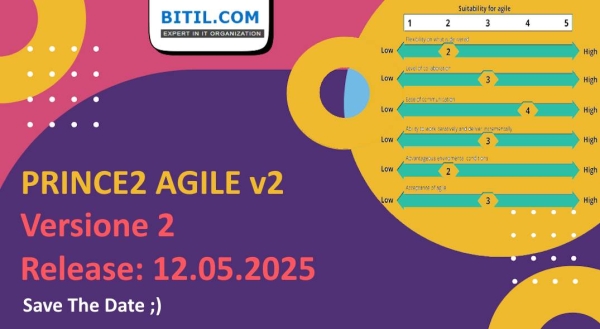The origins of the Agile Scrum methodology can be traced back to the article "The New New Product Development Game" by Nonaka & Takeuchi, published by HBR in 1986. The article documents a shift in commercial product development to accelerate time to market. It speaks of a "rugby approach" and a "Scrum shift downward."
The leading companies show six characteristics in managing their new product development processes:
- Built-in instability
- Self-organizing project teams
- Overlapping development phases
- "Multilearning"
- Subtle control
- Organizational transfer of learning
These characteristics are like pieces of a jigsaw puzzle. Each element, by itself, does not bring about speed and flexibility. But taken as a whole, the characteristics can produce a powerful new set of dynamics that will make a difference.
Built-in instability
Top management kicks off the development process by signaling a broad goal or a general strategic direction. It rarely hands out a clear-cut new product concept or a specific work plan. But it both offers a project team a wide measure of freedom and also establishes extremely challenging goals. Top management creates an element of tension in the project team by giving it great freedom to carry out a project of strategic importance to the company and by setting very challenging requirements.
Self-organizing project teams
A project team takes on a self-organizing character as it is driven to a state of "zero information"- where prior knowledge does not apply. Ambiguity and fluctuation abound in this state. Left to stew, the process begins to create its own dynamic order.
The project team begins to operate like a start-up company it takes initiatives and risks, and develops an independent agenda. At some point, the team begins to create its own concept.
A group possesses a self-organizing capability when it exhibits three conditions: autonomy, self-transcendence, and cross-fertilization.
Autonomy
Headquarters' involvement is limited to providing guidance, money, and moral support at the outset. On a day-to-day basis, top management seldom intervenes "We open up our purse but keep our mouth closed."; the team is free to set its own direction. In a way, top management acts as a venture capitalist.
Self-transcendence
The project teams appear to be absorbed in a never-ending quest for "the limit." Starting with the guidelines set forth by top management, they begin to establish their own goals and keep on elevating them throughout the development process. By pursuing what appear at first to be contradictory goals, they devise ways to override the status quo and make the big discovery.
Cross-fertilization
A project team consisting of members with varying functional specializations, thought processes, and behavior patterns carries out new product development. For example, consisted of hand-picked members from R&D, production, and sales. The company went a step further by placing a wide variety of personalities on the team. Such diversity fostered new ideas and concepts.
Overlapping development phases
The self-organizing character of the team produces a unique dynamic or rhythm. Although the team members start the project with different time horizons-with R&D people having the longest time horizon and production people the shortest-they all must work toward synchronizing their pace to meet deadlines. Also, while the project team starts from "zero information," each member soon begins to share knowledge about the marketplace and the technical community. As a result, the team begins to work as a unit. At some point, the individual and the whole become inseparable. The individual's rhythm and the group's rhythm begin to overlap, creating a whole new pulse. This pulse serves as the driving force and moves the team forward.
Under the holistic or rugby approach, the phases overlap considerably, which enables the group to absorb the vibration or "noise" generated throughout the development process. When a bottleneck appears, the level of noise obviously increases. But the process does not come to a sudden halt; the team manages to push itself forward.
Multilearning
Because members of the project team stay in close touch with outside sources of information, they can respond quickly to changing market conditions. Team members engage in a continual process of trial and error to narrow down the number of alternatives that they must consider. They also acquire broad knowledge and diverse skills, which help them create a versatile team capable of solving an array of problems fast. Such learning by doing manifests itself along two dimensions: across multiple levels (individual, group, and corporate) and across multiple functions.
Subtle control
Management establishes enough checkpoints to prevent instability, ambiguity, and tension from turning into chaos. At the same time, management avoids the kind of rigid control that impairs creativity and spontaneity. Instead, the emphasis is on "self-control," "control through peer pressure," and "control by love,'' which collectively we call "subtle control."
Subtle control is exercised in the new product development process in seven ways:
- Selecting the right people for the project team while monitoring shifts in group dynamics and adding or dropping members when necessary. "We would add an older and more conservative member to the team should the balance shift too much toward radicalism."
- Creating an open work environment.
- Encouraging engineers to go out into the field and listen to what customers and dealers have to say. "A design engineer may be tempted to take the easy way out at times, but may reflect on what the customer had to say and try to find some way of meeting that requirement".
- Establishing an evaluation and reward system based on group performance. .
- Managing the differences in rhythm throughout the development process. As mentioned earlier, the rhythm is most vigorous in the early phases and tapers off toward the end.
- Tolerating and anticipating mistakes.
A 1% success rate is supported by mistakes made 99% of the time. It's natural for young engineers to make a lot of mistakes. The key lies in finding the mistakes early and taking steps to correct them immediately. I believe we learn more from mistakes than from successes. That's not to say we should make mistakes easily. But if we do make mistakes, we ought to make them creatively, refrain from telling suppliers what to do. - Encouraging suppliers to become selforganizing. Involving them early during design is a step in the right direction. But the project team should refrain from telling suppliers what to do.
Organizational transfer of learning
The drive to accumulate knowledge across levels and functions is only one aspect of learning. We observed an equally strong drive on the part of the project members to transfer their learning to others outside the group. Transfer of learning to subsequent new product development projects or to other divisions in the organization takes place regularly. In several of the companies we studied, the transfer took place through "osmosis" -by assigning key individuals to subsequent projects. Knowledge is also transmitted in the organization by converting project activities to standard practice.
Source: The new new product development game by Nonaka & Takeuchi












